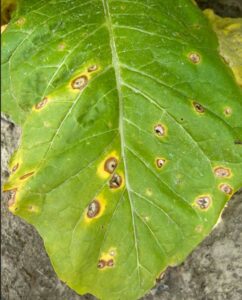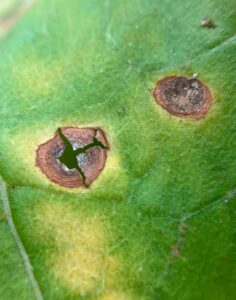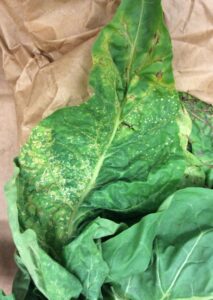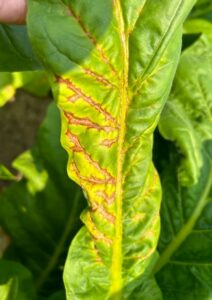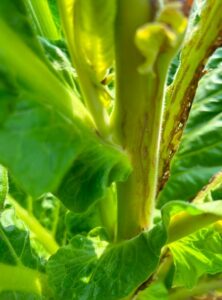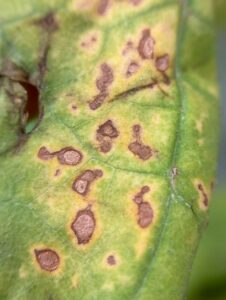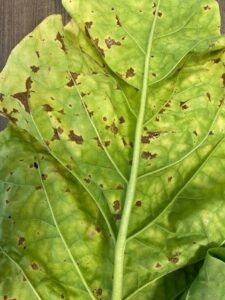NC State University – Tobacco Connection: Vol. 1, Num. 1
go.ncsu.edu/readext?1004852
en Español / em Português
El inglés es el idioma de control de esta página. En la medida en que haya algún conflicto entre la traducción al inglés y la traducción, el inglés prevalece.
Al hacer clic en el enlace de traducción se activa un servicio de traducción gratuito para convertir la página al español. Al igual que con cualquier traducción por Internet, la conversión no es sensible al contexto y puede que no traduzca el texto en su significado original. NC State Extension no garantiza la exactitud del texto traducido. Por favor, tenga en cuenta que algunas aplicaciones y/o servicios pueden no funcionar como se espera cuando se traducen.
Português
Inglês é o idioma de controle desta página. Na medida que haja algum conflito entre o texto original em Inglês e a tradução, o Inglês prevalece.
Ao clicar no link de tradução, um serviço gratuito de tradução será ativado para converter a página para o Português. Como em qualquer tradução pela internet, a conversão não é sensivel ao contexto e pode não ocorrer a tradução para o significado orginal. O serviço de Extensão da Carolina do Norte (NC State Extension) não garante a exatidão do texto traduzido. Por favor, observe que algumas funções ou serviços podem não funcionar como esperado após a tradução.
English
English is the controlling language of this page. To the extent there is any conflict between the English text and the translation, English controls.
Clicking on the translation link activates a free translation service to convert the page to Spanish. As with any Internet translation, the conversion is not context-sensitive and may not translate the text to its original meaning. NC State Extension does not guarantee the accuracy of the translated text. Please note that some applications and/or services may not function as expected when translated.
Collapse ▲May 18th
Transplanting progress has significantly slowed over the past two weeks due to heavy rainfall. Since May 1st, tobacco research stations in Kinston, Rocky Mount, Clayton, and Oxford have recorded from 2.02 to 7.68 inches of rain. The highest amounts of rainfall have been recorded to the north and east of Raleigh. Drought conditions persisted from the onset of transplanting through about May 4th, but those conditions are in the rearview mirror…for the time being.
The extended period of cool, cloudy, and damp weather has increased the risk of visual growth disorders developing, most commonly appearing as leaf spots. Identifying the cause of leaf spots can be challenging due to the variety of possible causes. Accurate diagnosis is crucial for tobacco growers as they consider management options. This Extension Bulletin aims to provide practical guidance for correctly diagnosing these disorders.
Leaf spot disorders in tobacco can be caused by biotic (living) and abiotic (non-living) factors. Biotic leaf spot disorders include fungal diseases, such as target spot, brown spot, or frogeye leaf spot, as well as bacterial diseases, such as angular leaf spot. Viral diseases, such as tomato spotted wilt virus (TSWV) transmitted by thrips, may also produce leaf spots. In contrast, abiotic leaf spot disorders may include nutritional deficiencies (phosphorus or manganese), pesticide application injury, or ozone exposure (weather fleck). Management strategies for each of these issues vary significantly.
Major diseases
Target spot, caused by Rhizoctonia solani, is the most common and yield-limiting foliar disease in North Carolina tobacco. The disease appears as small, brown, circular spots scattered on the lower leaves. As the disease develops, the spots will grow larger, developing rings, which give the lesions their ‘target’ appearance and the center may crack off (Figures 1 and 2). The spots may spread from the lower leaves to the mid and upper leaves. Warm, wet weather has led to reports of target spot in young tobacco. Azoxystrobin (QuadrisⓇ Flowable) is labeled for use in the field and greenhouse, and mancozeb (ManzateⓇ Pro StickTM) has a 24c and 2ee label for use in tobacco in North Carolina. Both fungicides are moderately effective for reducing target spot, with a possible yield increase of 5%. However, timing is important. Since fungicides labeled for target spot are preventative, it is most effective to spray before the observation of leaf spots, typically at 4-5 weeks after transplant. Learn more about the three-pronged, preventative approach to reducing target spot in your tobacco field.
Tomato spotted wilt virus (TSWV)
TSWV is a foliar disease most commonly transmitted by thrips. Tobacco thrips (Frankliniella fusca, Thysanoptera: Thripidae) are the most important vector of TSWV in tobacco. The disease appears as yellow stippling (small dot pattern) next to the leaf veins. As the disease develops, the yellow stippling will turn reddish to brown, and may develop rings (Figure 3). The veins of infected leaves may also turn reddish to brown showing necrotic areas. This symptom is also known as bronzing (Figure 4). The stalks may also display brown streaking or bronzing (Figure 5). While not as prevalent in North Carolina tobacco as it is for our neighbors in Georgia, TSWV can be damaging when the disease develops within the first six weeks following transplant. Management of TSWV relies on vector prevention for locations where TSWV incidence is greater than 10% infection. The Tobacco Thrips Flight and TSWV Intensity Predictor may allow you to determine when thrips generations (or “flights”) may occur. Imidacloprid (Admire Pro®) and Actigard® (Acibenzolar-S-methyl) applied to transplants in the greenhouse are the most commonly used TSWV management measures. Drench treatments 48-72 hours before transplant are preferred over water transplant treatments. Water transplant insecticide treatments may provide inconsistent protection. One treatment with either of these insecticides should be enough to protect seedlings. However, if located in an area with a history of TSWV above 15%, growers may choose to apply both insecticides before transplant. In these cases, Admire Pro and Actigard should be applied separately (at least one day apart) to avoid the risk of phytotoxicity, and each can provide up to 21 days of protection after transplant.
Other leaf diseases
Other leaf spot diseases, such as brown spot (Figure 6), frogeye leaf spot, and angular leaf spot (Figure 7) are less common in North Carolina. Brown spot may look similar to target spot, but the spots are often more irregularly shaped and do not crack. Frogeye leaf spot will start as small, sunken white/tan spots, and will not grow larger than 1 cm. As the disease develops, the spots will develop a brown margin, giving the symptoms their ‘frogeye’ appearance. Angular leaf spot will often lead to spots around the veins, like TSWV, but the spots will be brown and the veins will not redden. While there are no effective chemical management options for these diseases, cultural practices that reduce moisture on the leaves on growing tobacco and improve plant health (proper nutrition) can reduce the risk of these diseases.
Nutrient Disorders
Manganese (Mn) deficiency (Figure 8) is the most consistent nutrient issue that leads to leaf spotting. However, this is not common in the flue-cured tobacco regions of North Carolina. Manganese deficiency can occur when soil pH is higher than 6.2 and when root growth is limited by poor conditions or chemical damage. The deficiency is most likely to occur in the period of growth between transplanting and layby (~5 weeks after transplanting). When diagnosing Mn deficiency, plant tissue and soil samples from both affected and unaffected areas should be collected for laboratory analysis. If Mn is deficient, one foliar application of 0.5 lbs Mn/acre should improve plant growth and vigor. Higher application rates should be avoided in order to prevent the development of Mn toxicity.
Phosphorus (P) deficiency (Figure 9) also causes spotting in the lower, older plant tissue. Since phosphorus is mobile within plants, the spotting is unlikely to be seen in younger vegetation (Figure 10). Visual symptoms of P deficiency in field production have not been reported in recent decades, due to sufficient in-season P fertilizer application and sufficient legacy P within the tobacco-growing soils of North Carolina. When diagnosing P deficiency in field production, plant tissue and soil samples from both affected and unaffected areas should be collected for laboratory analysis. If P is deficient, 20 to 40 lbs. P2O5/acre should be sufficient for plants to regain normal growth. In addition, routine soil sampling prior to the start of field production should provide suitable information for appropriate P management in tobacco. It should be noted that that P deficiency is the least likely factor to cause leaf spot appearance in North Carolina tobacco production.
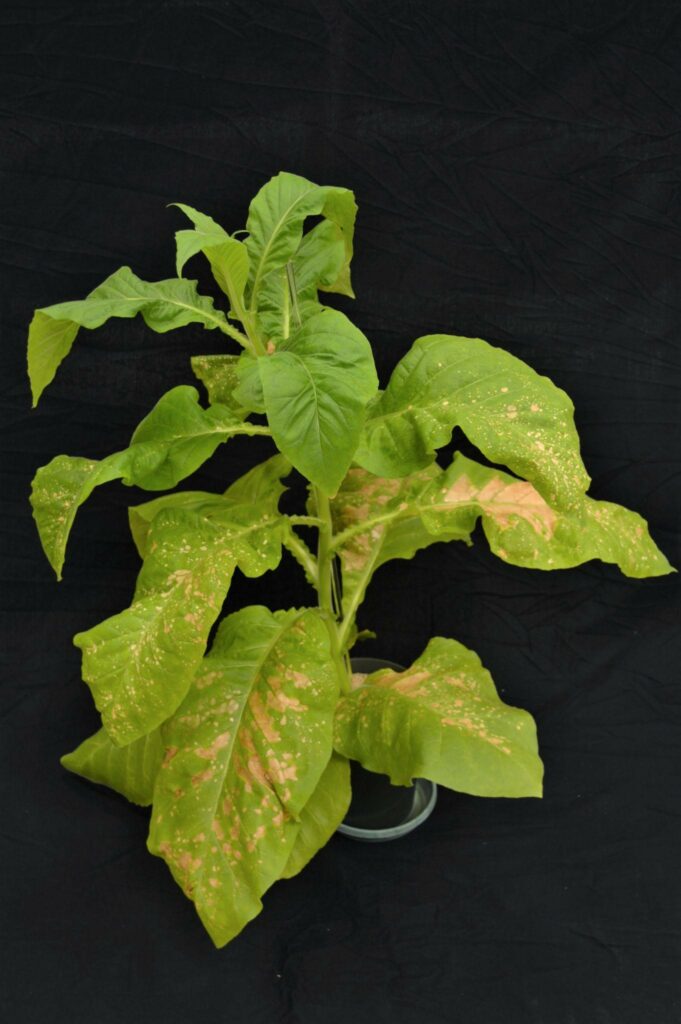
Figure 8. Manganese (Mn) deficiency in older tobacco plants. Note that Mn deficiency is not commonly observed in field production, but is more likely to be documented when soil pH is above 6.2. This photograph was sourced from a potted greenhouse trial where Mn deficiency was induced for research purposes. ©2016 Forensic Floriculture, courtesy of Dr. Brian Whipker – NC State University, Department of Horticulture Science
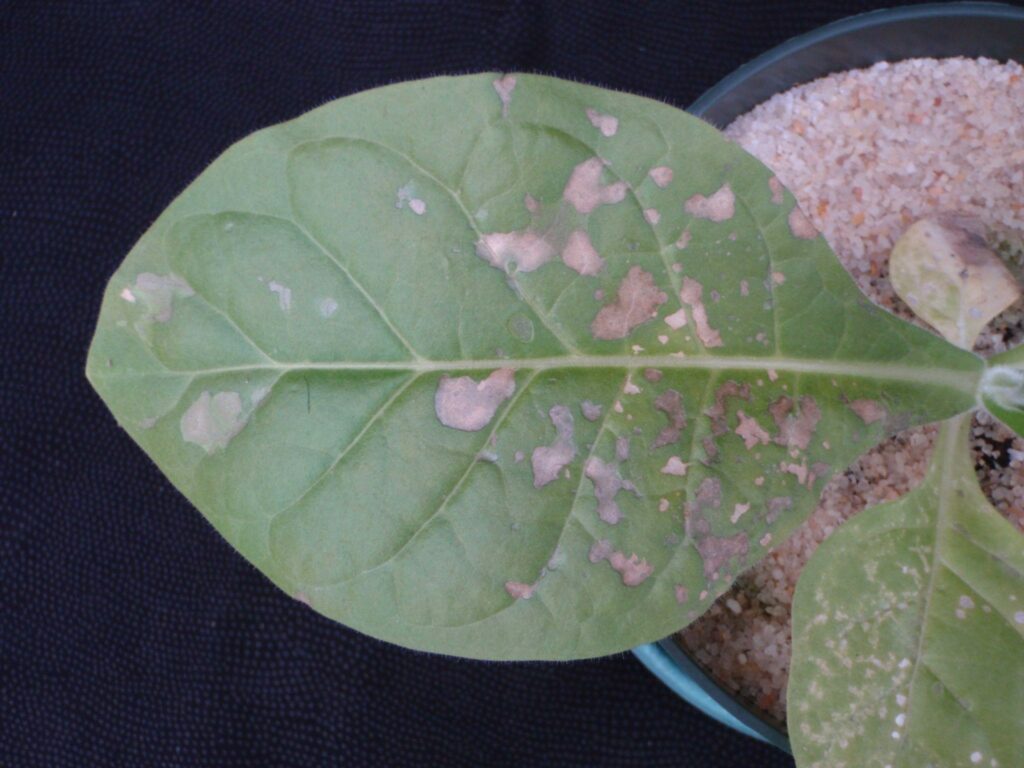
Figure 9. Phosphorus (P) deficiency in young tobacco plants. Note that P deficiency has not been reported in field production in a number of decades, this photograph was sourced from a potted greenhouse trial where P deficiency was induced for research purposes. ©2016 Forensic Floriculture, courtesy of Dr. Brian Whipker – NC State University, Department of Horticulture Science
Additional information pertaining to nutrient management and helpful diagnostic tools can be accessed via the NC State University Tobacco Diagnostic Key.
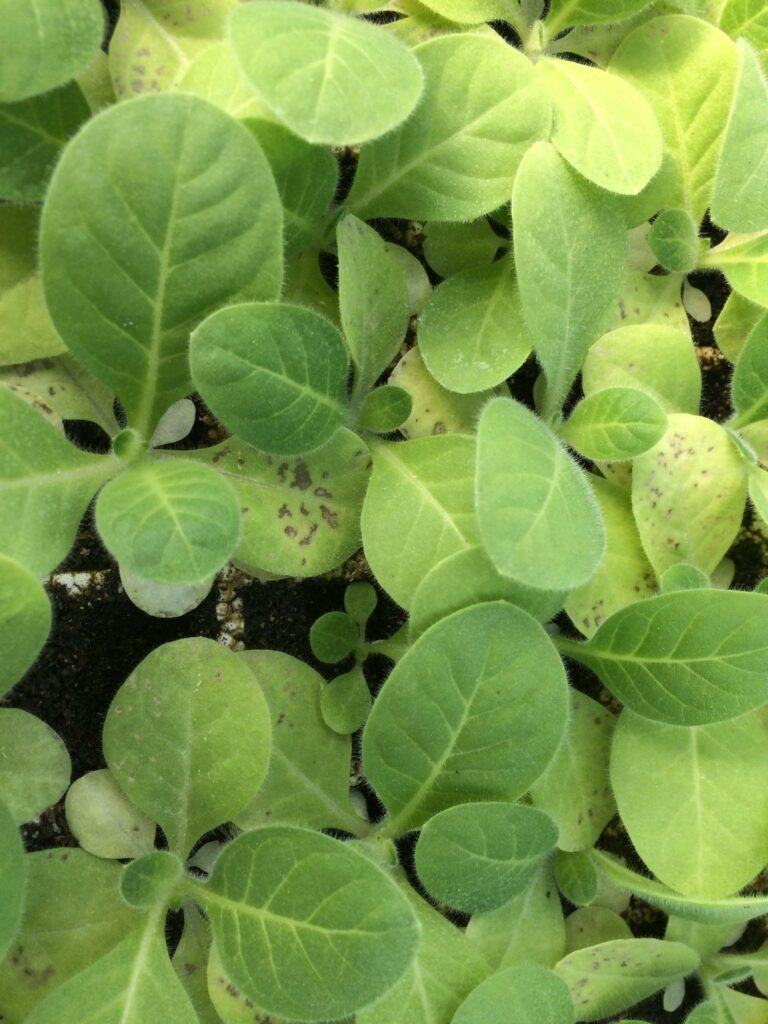
Figure 10. Phosphorus (P) deficiency in tobacco seedlings with low float bed fertility. Note that brown lesions are present in lower, older leaves that are pale green to yellow in color. The same lesions are not found in newer, younger leaves because P is plant mobile
Weather Fleck
High levels of ground-level ozone (O3) have been associated with the occurrence of weather fleck (Heggestad et al.1959). Pollutants, such as nitrogen oxide (NO2) and sulfur dioxide (SO2) can worsen ozone injury. Ozone forecasts for North Carolina are available through the Air Quality Portal. There are no controls for weather fleck.
The ozone absorption that leads to the weather fleck disorder is a result of foliar uptake through the plant stomata. As such, conditions that lead to stomata being open for extended periods when ozone concentrations are high, will also lead to more damage. Weather fleck appears first on the older leaves, which become marked by numerous, closely aggregated, irregular, water-soaked lesions and spots (Heagle et al. 1987) (Figure 11). On younger, expanding leaves, the spots appear near the leaf tip and are fewer in number (Figure 11). This indicates that the younger leaf was much smaller at the time of ozone exposure, whereby only the leaf tip was protruding from the bud of the plant. Symptoms of ozone damage may appear within 24 hours of exposure and within 48 hours the water-soaked lesion changes from brown to gray or white in color (Pasqualini et al. 2003).
Ozone damage symptoms can also be confused with seedling damage caused by larvae of fungus gnats. The larvae are only found in the soil on floatbed trays, and they chew on plant tissue in contact with the soil. Lesions and spots observed in leaves that were not in contact with the soil in the water trays are probably caused by either weather fleck or other phenomena.
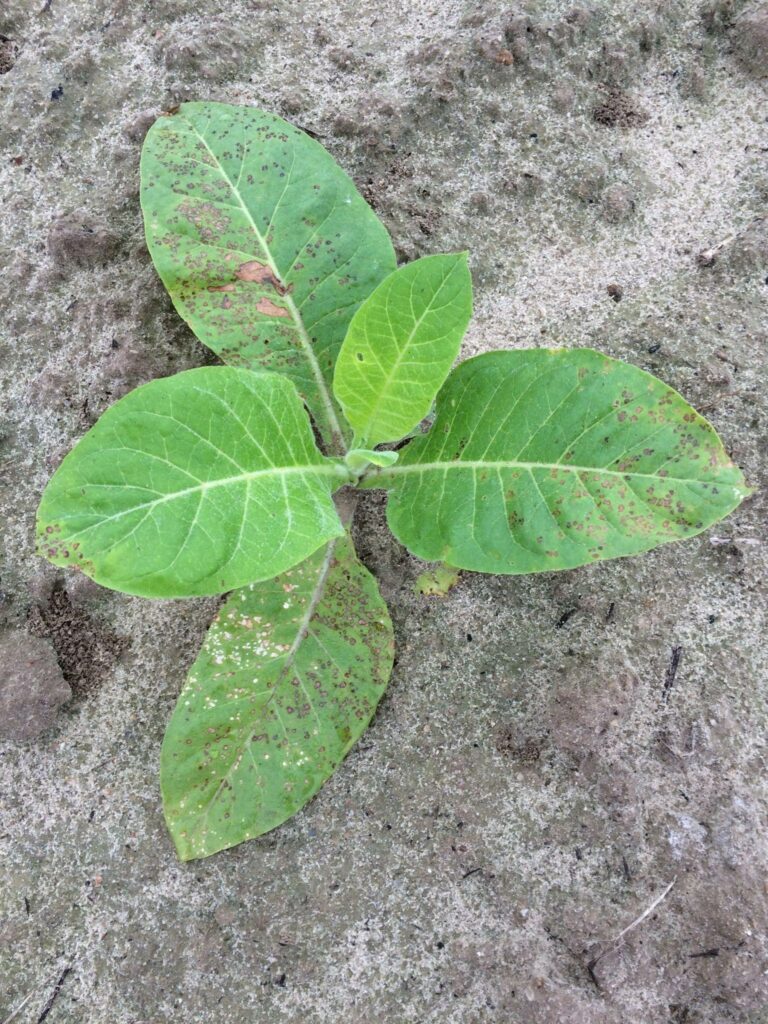
Figure 11. Weather fleck (ozone damage) to flue-cured tobacco. Note that the number of flecking lesions declines with leaf age, indicating that those leaves were significantly smaller when the exposure took place.
Chemical Injury
Agrochemical, or crop protection agents, are essential for successful and sustainable tobacco production. However, their application to tobacco plants is not without risk in some situations and in reference to specific compounds (Figure 12). Herbicides are typically the group of pesticides that have the greatest injury potential to tobacco, simply because they are designed to kill or inhibit the growth of plants. Within the various herbicide modes of action that are labeled for tobacco, those within the protox-inhibiting (PPO) family present the greatest risk. In general, this group of herbicides is characterized by their “burning” ability, both from root and leaf absorption. The active ingredients carfentrazone (AimⓇ EC) and sulfentrazone (SpartanⓇ 4F) are two examples of PPO-inhibiting herbicides, both of which are labeled for use in tobacco. Carfentrazone is a contact herbicide, meaning it is foliar absorbed and does not have residual activity. In contrast, sulfentrazone is applied prior to weed emergence, has excellent root uptake, and provides good to excellent residual weed control. Injury from both herbicides induces a leaf spot appearance; however, injury is more obvious to identify with carfentrazone because it is localized only to the exact areas of plant exposure. Other herbicides that are not labeled for use in tobacco which may result in leaf spot symptomology include, but are not limited to: fomesafen, gramoxone, and glufosinate.
Visual chemical injury in the form of leaf spotting is not unique to herbicides. For example, leaf spotting has been reported to varying degrees in situations with systemic insecticide injury. In those cases, systemic insecticides (usually imidacloprid or thiamethoxam) were applied at a high rate as a greenhouse tray drench or were misapplied altogether. These issues are typically amplified during periods of cool, damp environmental conditions during and after transplanting. Additional factors that negatively impact root health may enhance systemic insecticide injury, such as leaving treated seedlings in float trays for more than 72 hours after insecticide treatment. Tobacco seedlings require at least 48 hours to absorb the systemic insecticide product through the roots, but more than 72 in insecticide-treated cells may exacerbate the risk of phytotoxicity. However, as growing conditions normalize, recovery is quick and should not affect yield.
Fungicides, specifically those within FRAC Group 11 (strobilurins) are known to produce leaf spots on tobacco as well. Injury from strobilurins (ex. azoxystrobin) develop within a few days after application and are enhanced by warm, humid conditions when tobacco is turgid and tender. Injury can be mitigated to some degree by using a low to moderate fungicide application rate, higher carrier volume, and treating when air temperature is <90°F.
Producers that need a leaf spot diagnosis should contact their local Cooperative Extension Agent for assistance.
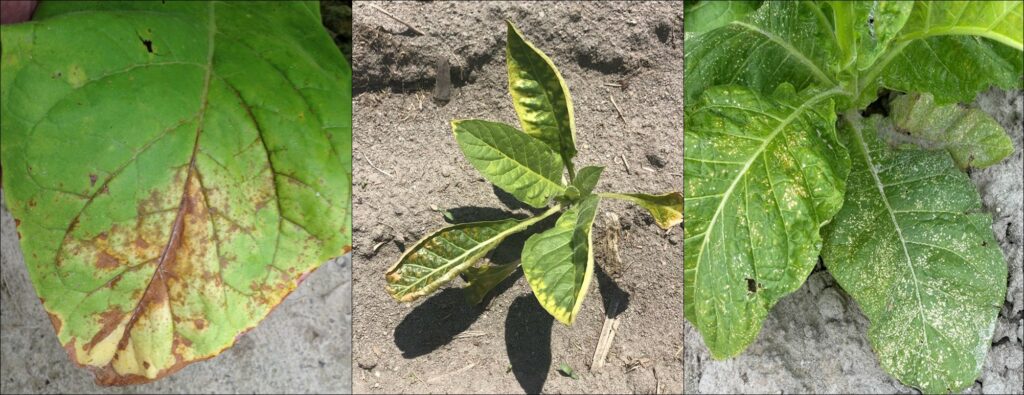
Figure 12. Chemical injury from the herbicide carfentrazone (left), the insecticide thiamethoxam (middle), and the fungicide azoxystrobin (right)
Other Resources:
NC State University Plant Disease & Insect Clinic
North Carolina Department of Agriculture & Consumer Services – Agronomic Division
Authored by:
Dr. Daisy Ahumada, Extension Plant Pathologist – Cotton, Corn, and Tobacco, Dept. of Entomology and Plant Pathology
Dr. Lorena Lopez, Extension Entomologist – Tobacco and Small Fruit, Dept. of Entomology and Plant Pathology
Dr. Matthew Vann, Extension Agronomist – Tobacco, Dept. of Crop and Soil Sciences
References
Heagle. A.S., Heck, W.W., Lesser,V.M., and Rawlings, J.O. 1987. Effect of daily ozone exposure during duration and concentration fluctuations on yield of tobacco. Phytopathology 77:856-862
Heggestad HE, Middleton JT. Ozone in High Concentrations as Cause of Tobacco Leaf Injury. Science. 1959 Jan 23;129(3343):208-10. doi:10.1126/science.129.3343.208. PMID: 17808689.
Pasqualini S, Piccioni C, Reale L, Ederli L, Della Torre G, Ferranti F. Ozone-induced cell death in tobacco cultivar Bel W3 plants. The role of programmed cell death in lesion formation. Plant Physiol. 2003 Nov;133(3):1122-34. doi: 10.1104/pp.103.026591. PMID: 14612586; PMCID: PMC281608.



